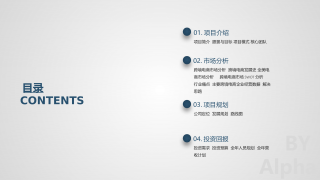五相矩阵变换器的研究
VIP免费
摘 要
矩阵变换器(Matrix Converter, MC)具有拓扑结构简单,结构紧凑,能量可
双向流通,可产生正弦输入电流和输出电压,输入功率角可调等优点,成为近年
来电能转换技术的研究热点。但传统矩阵变换器(Conventional Matrix Converter,
CMC)存在着换流和控制策略比较复杂等问题,使得 MC 难于得到广泛的应用。
双级矩阵变换器(Two-stage Matrix Converter, TSMC)是在 CMC 基础上发展起来
的一种新型的矩阵变换器。TSMC 不仅在性能上与 CMC 无异,而且克服了 CMC
的换流过程复杂的问题,使输入侧能够实现软开关换流,因而成为 MC 发展的主
流方向。
本文提出一种新型的五相 TSMC,该变换器采用改进的双级拓扑结构,实现
了三相输入、五相输出的直接功率变换。五相 TSMC 同样具有三相 TSMC 的优点:
如采用更少的主电路开关管,开关管更容易换流,换流策略和调制控制更简单等
等。另外,本文提出的变换器主要应用到五相异步电机的拖动系统,采用多相异
步电机拖动的系统比传统的三相异步电机拖动系统具备以下一些优点:如可以在
断相的非正常运行状态下运行;与三相 TSMC 相比,五相 TSMC 具有更小的输入
电流波动,从而不必使用多个三相负载减小 TSMC 输入电流波动。
本文第一章主要探讨了当前矩阵变换器的研究进展情况、课题的研究目的和
方向;第二章介绍三相 MC 目前主要研究进展情况和几种主要的控制算法,并对
三相空间矢量调制方法进行了较详细的论述;第三章对五相 TSMC 进行了深入的
研究,通过采用改进的五相 park 变换,对五相空间矢量调制技术进行了优化,并
相应地对各控制策略进行了仿真验证。
针对实际电网电压经常出现不对称的情况,本文第四章对电网电压不平衡对
五相 TSMC 的影响进行了详细的分析,并提出了改进的方法:作者首先建立五相
TSMC 空间矢量调制下的数学模型,然后分析了电网电压存在负序电压时,对输
出电压与输入电流的影响,最后提出了消除电网不平衡造成输出电压和输入电流
存在二次谐波的方法。
为使得五相 TSMC 能更好更稳定地运行,本文第五章详细地探讨了该变换器
主电路开关管换流的问题,第六章对本变换器的输入侧滤波电路参数选择问题进
行了探讨。
本文通过深入探讨三相 TSMC 控制算法,在此基础上将相关理论推广应用到
五相 MC 的实现,并根据推广改进的五相 park 变换,提出了五相空间矢量调制的
优化技术。经仿真验证,本文提出的相关理论和控制算法切实可行,为后续多相
大容量电机调速系统的矩阵变换器实现进行了有益的探索。
关键词:双级矩阵变换器 五相 不平衡 空间矢量
ABSTRACT
Matrix Converter (MC) has many advantages such as simple topology, bi-
directional power flowing, adjustable input power factor, etc. Therefore, MC research
has become a hot topic in power conversion technology in recent years. However,
conventional Matrix converter has complex control strategy and commutation problems,
which makes MC difficult to be widely used. Two-stage matrix converter (TSMC) is a
new type of matrix converter, which is developed on the basis of CMC. TSMC
becoming the mainstream of MC research because it not only have the same
performances as CMC, but also overcome the problem of the complex commutation of
CMC, and for the input stage the soft switching is realized.
In this thesis, with an improved two-stage topology, a new type of five-phase two-
stage matrix converter is presented, for which a three phase to five-phase direct power
conversion can be complemented.
Five-phase TSMC has the same advantages as three-phase TSMC, such as less
switches, more convenient commutation, simpler commutation and control strategy, etc.
In addition, the matrix converter presented in this thesis is mainly used in five-phase
induction machine drive system. Compared with three-phase induction machine drive
system, multi-phase induction machine drive system has advantage of being operated at
phase opening. Compared with three-phase TSMC, five-phase TSMC has much smaller
high frequency input current ripple, thus eliminating the need to use more three-phase
loads to decrease TSMC current ripple.
Chapter one mainly discusses the recent progress of matrix converter research, the
purpose and direction of this search; chapter two introduces three-phase MC research
progress and several main control algorithms, at the same time three-phase space vector
modulation method is described in detail; in chapter three deep investigation on five-
phase TSMC has been completed, and with the improved five-phase park conversion,
five-phase space vector modulation technology has been developed, and simulations are
proceeded to verify various control strategies.
In reality, the power grid voltages are always unbalanced. Chapter four analyzes
the influence of unbalanced power grid voltages on the five-phase TSMC, and proposes
the improved method. At first, the mathematical model of five-phase TSMC space
vector modulation is established, and then the influence of negative sequence voltages
on output voltages and input currents has been analyzed. Finally, the method which may
eliminate the second order harmonic in output voltages and input currents is proposed.
In order to make five-phase TSMC operate better and more stable, chapter five
discusses the commutation method of this converter, in chapter six the parameters of
input filter circuit have been investigated.
In this thesis,three-phase TSMC control algorithm is studied, and such of the five
phase MC based on improved five phase park conversion is extended. The five phase
space vector modulation optimization technique is presented. The simulation results
show that the theory and control algorithm presented in this thesis is feasible. This is a
useful exploration in multi-phase large capacity induction machine speed control system
matrix converter.
Key Words: Two Stage Matrix Converter, Five phase,
Unbalance,Space Vector.
目 录
摘要
ABSTRACT
第一章 绪论.........................................................................................................................................1
1.1 选题来源及课题意义..............................................................................................................1
1.2 矩阵变换器的发展历史及现状..............................................................................................2
1.3 矩阵变换器近期取得的进展..................................................................................................4
1.4 本文的主要研究内容..............................................................................................................4
第二章 三相矩阵变换器研究............................................................................................................6
2.1 三相矩阵变换器的拓扑结构..................................................................................................6
2.2 三相矩阵变换器的典型控制策略..........................................................................................6
2.3 空间矢量调制策略的矩阵变换器..........................................................................................8
2.3.1 坐标轴变换...................................................................................................................8
2.3.2 矩阵变换器拓扑结构分析.........................................................................................10
2.3.3 三相矩阵变换器的空间矢量调制.............................................................................13
2.3.2.1 逆变电路空间矢量变换..........................................................................................13
2.3.2.2 整流电路空间矢量变换..........................................................................................15
2.3.2.3 实际的矩阵变换器空间矢量法..............................................................................15
2.4 本章小结.................................................................................................................................16
第三章 五相矩阵变换器的研究......................................................................................................18
3.1 五相双级矩阵变换器与五相单级矩阵变换器的比较........................................................18
3.2 五相双级矩阵变换器的几种拓扑结构................................................................................18
3.3 五相双极矩阵变换器的调制策略........................................................................................20
3.3.1 五相矩阵变换器整流侧线线换流法.........................................................................20
3.3.2 五相矩阵变换器逆变侧换流方法.............................................................................21
3.3.3 五相双级矩阵变换器换流同步.................................................................................25
3.4 五相双极矩阵变换器的电压传输比计算............................................................................26
3.5 五相双极矩阵变换器的输出调制策略的改进....................................................................28
3.5.1 输出侧减少换流次数的方法.....................................................................................28
3.5.2 采用广义park 变换的五相双级矩阵变换器............................................................29
3.5.2 采用广义park 变换的五相双级矩阵变换器的仿真结果........................................32
3.6 本章小结.................................................................................................................................35
第四章 五相双级矩阵变换器输入不对称分析..............................................................................36
4.1 电压或电流波形质量的定义................................................................................................36
4.2 不对称输入的研究现状........................................................................................................36
4.3 空间矢量状况下输入不对称对五相双级矩阵变换器输出的影响....................................37
4.3.1 整流侧空间矢量调制.................................................................................................37
4.3.2 逆变侧空间矢量调制.................................................................................................38
4.3.3 双级矩阵变换器的空间矢量调制.............................................................................39
4.4 不对称输入电压对输出的影响............................................................................................40
4.4.1 不对称输入电压对虚拟整流输出电压的影响.........................................................40
4.4.2 不对称输入电压对五相输出电压的影响.................................................................40
4.5 不对称输入电压对输入电流的影响....................................................................................41
4.5.1 五相线电流与相电流的关系.....................................................................................41
4.5.2 不对称输入电压对输入电流的影响.........................................................................42
4.6 消除电压不对称影响的方法................................................................................................43
4.6.1 谐波注入法.................................................................................................................43
4.6.2 负序谐波分量的占空比实现.....................................................................................44
4.7 本章小结.................................................................................................................................44
第五章 五相双级矩阵变换器的换流分析......................................................................................45
5.1 双级矩阵变换器的换流技术................................................................................................45
5.2 死区换流技术........................................................................................................................45
5.3 五相双级矩阵变换器的换流技术........................................................................................46
5.4 本章小结.................................................................................................................................48
第六章 输入滤波电路性能分析......................................................................................................49
6.1 LC 滤波电路设计...................................................................................................................49
6.2 输入滤波器的相移补偿........................................................................................................50
6.3 RLC 滤波电路设计................................................................................................................51
6.3.1 输入滤波器稳态数学分析.........................................................................................52
6.3.2 目标函数描述.............................................................................................................53
6.4 实验分析.................................................................................................................................55
6.5 本章小结.................................................................................................................................55
第七章 结论与展望..........................................................................................................................56
§7.1 结论.......................................................................................................................................56
§7.2 展望.......................................................................................................................................57
附录 1....................................................................................................................................................58
附录 2....................................................................................................................................................62
参考文献...............................................................................................................................................66
第一章 绪 论
第一章 绪 论
1.1 选题来源及课题意义
由于具有结构简单、经济可靠、易于维护等优点,三相异步电机系统得到了非
常广泛的应用。对于大功率三相异步电机的变频调速系统,由于功率开关元件容
量和耐压等级的限制,高压逆变器采用多个功率开关元件串联组成多电平变频器
而大电流逆变器则采用多个功率开关元件并联分流技术实现大容量的相电流。但
串联功率开关元件的动态均压和并联功率开关元件的动态均流等问题都将增加控
制系统的复杂程度,降低了控制系统的可靠性,从而大大提高系统的建设、运行
和维护成本。但是,多相异步电机通过增加定子绕组的相数,可以在不提高定子
单相绕组电压和电流的情况下,提高电机单机的功率容量,而与之相应的多相变
频器不必解决功率开关元件并联而带来的均流问题或串联而带来的均压问题。
与三相异步电机相比较而言,多相异步电机的主要优点有:①转矩脉动次数
升高(即脉动频率增加),幅值下降;②转子谐波电流较小;③绕组的电流幅值
较小;④逆变器端的电流谐波较小;⑤系统可靠性较高;⑥对于同体积的电机,
相数的提高,甚至可以提高输出力矩和输入电流的比值。⑦多相异步电机动态响
应较快,稳定转矩脉动较小,从而降低系统的机械共振的可能性,降低电机运行
噪声及转子损耗。⑧另外,多相异步电机的制造工艺与三相异步电机相比较,没
有特别的地方,制造成本相当。因此在多相异步电机的设计上可以借鉴三相异步
电机的很多方法和经验。
据报道,国外已经在军用船舶上使用多相异步电机作为驱动装置以提高船舶
的动力、机动性和可靠性。而我国也开始加紧对多相异步电机进行研制,国内的专
家学者如马挺、贾小川等人对多相异步电机产生了浓厚的兴趣,在 “上海电气
(集团)总公司 2006 年科技计划”中也出现了相关的研究项目。
多相异步电机变频调速系统的优越性能不但体现在船舶、航空航天、水下机器
人等特殊场合,在由电池供电的电动工具、电动轮椅、割草机等电压不高的小功率
系统也同样具有非凡的性能。多相异步电机系统需要配置变换器。矩阵变换器
(Matrix Converter, MC)代表了当前最先进的 AC-AC 变换技术,近十几年来一
直是国际上的研究重点和热点,MC 具有多相晶闸管 、 AC-AC 斩波变频器 、
MOSFET 或IGBT 型AC-DC-AC 变频器所无法比拟的优点:①省去了AC-DC-AC
变频所需要由体积庞大的储能元件构成的中间直流环节,体积更小,重量更轻;
②能够同时提供正弦输入电流和输出电压;③输出电压频率的调节范围大,甚至
可以输出
1
五相矩阵变换器的研究
直流电;④输出电压幅值、相位和频率可以分别独立调节;⑤输入功率因数可调
特别是能实现功率的双向流动;⑥变频器容量可以做得很大。
由多相 MC 和多相异步电机组成的变频调速系统具有不同凡响的优越性能。
目前,关于 MC 的研究主要集中在三相和单相上,虽然在理论上 MC 可以扩展到
多相,但是,国内外至今未见多相 MC 的研究报道。
本课题将以多相 MC 的一个特例——五相 MC 作为研究对象,展开一个全新
的研究,探讨五相 MC 的拓扑结构以及控制策略等。为五相系统提供一个性能优
越的变换器,实现五相异步电机的变频调速等。五相 MC 的研究理论将促进多相
系统的研究和发展,为国家在船舶、航空航天等行业装备多相系统提供理论支持
为任意多相 MC 的研究提供参考,相关的研究理论也可以反过来为三相或单相
MC 的研究提供借鉴作用。
1.2 矩阵变换器的发展历史及现状
矩阵变换器的电路拓扑结构是 Gyugui 在1976 年提出的,1979 年意大利学者
M.Venturini 和A.Alesina 提出矩阵变换器的存在理论[1~3]。他们首次系统地给出了矩
阵式变换器的数学分析,同时提出了一种矩阵式变换器的调制算法,被称为“直
接传递函数”方法。在这种方法中,将矩阵式变换器视为一个开关函数矩阵,变
换器的输出电压计算可以由输入电压和开关函数矩阵而得到。 Venturini 的理论实
际上是给出了一种 PWM 电压调制的方法,他虽然解决了矩阵变换器算法问题,
但存在输出输入电压比小于 0.5 的缺陷。
随着电力电子技术和微机控制技术的不断发展。矩阵变换器的研究工作越来
越被人们所重视,为了解决 M.Venturini 和A.Alesina 控制方案中的不足,先后有
不少学者对矩阵变换器进行了一系列的研究工作,如 T.A.Lipo,D.G.Holemes 提出
了一种电流控制交流PWM 调制方法。该方法根据矩阵变换器的开关传递函数矩阵
由电流连续条件,将其分解为若干矩阵分量,通过分别计算,最后合成得到调制
矩阵。
八十年代末、九十年代初,南斯拉夫学者 L.Huber 和D.Borojevic 提出了一种
基于空间矢量调制技术的 PWM 技术[4]。首先根据矩阵变换器的 PWM 的开关状态,
定义出六边形开关状态矢量图,然后按输出矢量在任意时刻由其相邻的开关状态
矢量合成,得到每一采样周期的开关占空比。连续合成一定角速度旋转的输出电
压矢量,就获得所需要的频率和正弦输出电压。
我国在矩阵变换器方面的研究开始的较晚,基本上从 90 年代开始,南京航空
航天大学,西安交通大学,上海大学,哈尔滨工业大学先后展开了这方面的研究
工作。
2
摘要:
展开>>
收起<<
摘 要矩阵变换器(MatrixConverter,MC)具有拓扑结构简单,结构紧凑,能量可双向流通,可产生正弦输入电流和输出电压,输入功率角可调等优点,成为近年来电能转换技术的研究热点。但传统矩阵变换器(ConventionalMatrixConverter,CMC)存在着换流和控制策略比较复杂等问题,使得MC难于得到广泛的应用。双级矩阵变换器(Two-stageMatrixConverter,TSMC)是在CMC基础上发展起来的一种新型的矩阵变换器。TSMC不仅在性能上与CMC无异,而且克服了CMC的换流过程复杂的问题,使输入侧能够实现软开关换流,因而成为MC发展的主流方向。本文提出一种新型...
相关推荐
-
跨境电商商业计划书模版VIP免费

 2025-01-09 27
2025-01-09 27 -
跨境电商方案范文VIP免费

 2025-01-09 14
2025-01-09 14 -
创业计划书VIP免费

 2025-01-09 18
2025-01-09 18 -
xx生鲜APP计划书VIP免费

 2025-01-09 12
2025-01-09 12 -
跨境电商创业园商业计划书(盈利模式)VIP免费

 2025-01-09 8
2025-01-09 8 -
跨境电商计划书VIP免费

 2025-01-09 13
2025-01-09 13 -
绿色食品电商平台项目计划书VIP免费

 2025-01-09 22
2025-01-09 22 -
农产品电子商务商业计划书VIP免费

 2025-01-09 9
2025-01-09 9 -
农村电商平台商业计划书VIP免费

 2025-01-09 13
2025-01-09 13 -
生鲜商城平台商业计划书VIP免费

 2025-01-09 21
2025-01-09 21
作者:高德中
分类:高等教育资料
价格:15积分
属性:80 页
大小:2.36MB
格式:DOC
时间:2024-11-19






